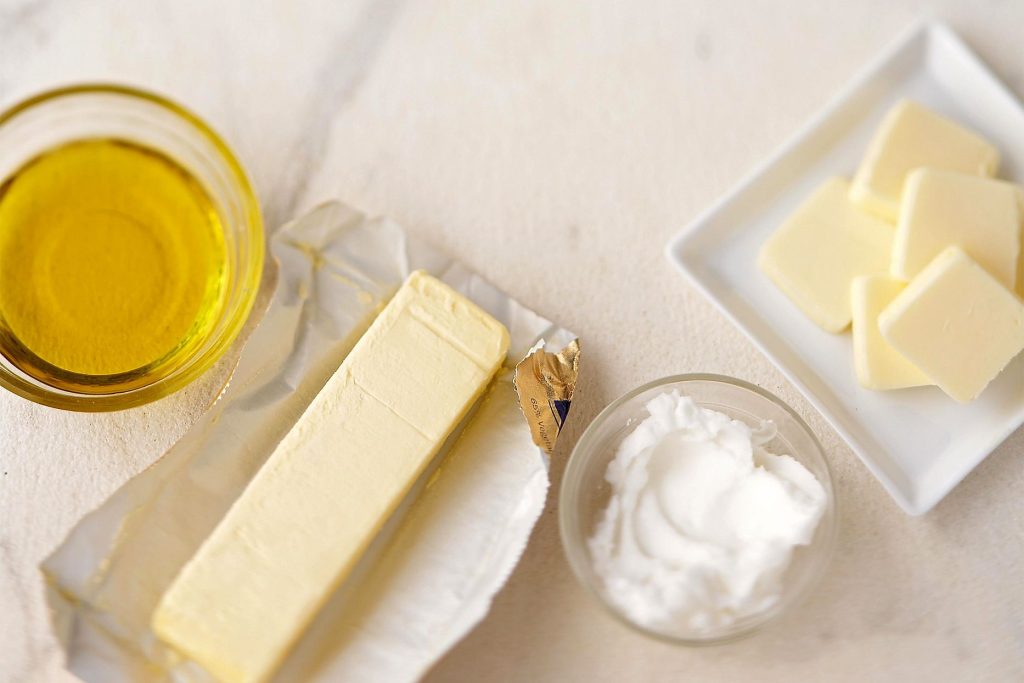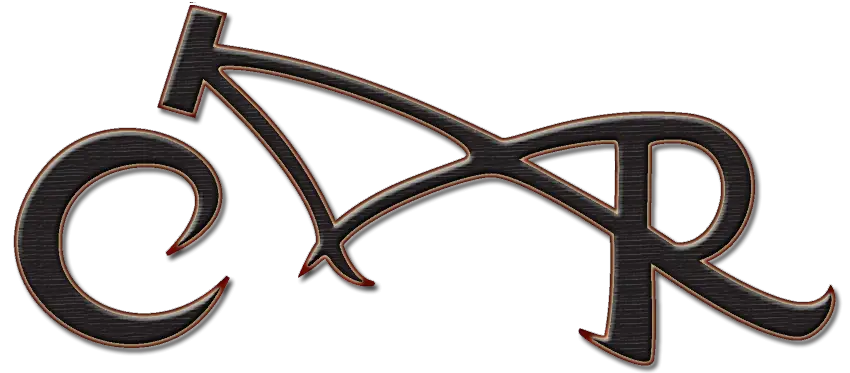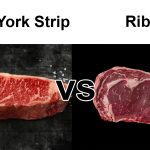Have you ever been faced with the seemingly simple but ultimately tricky question of how many tablespoons in a cup of butter? Whether you’re baking or cooking, getting measurements right is key for delicious results. Luckily, understanding this conversion isn’t as hard as it seems. In this blog post, we’ll provide some easy-to-follow tips and tricks to help you know exactly how many tablespoons are in a cup of butter every time!
What is a Cup?
A cup is a unit of measure used in cooking and baking that equals 8 fluid ounces or 236.59 milliliters (mL). A cup is often used to measure out ingredients such as sugar, flour, butter, liquids, and more. When measuring dry ingredients with a cup, it is important to scoop the ingredient into the cup instead of packing it down for an accurate measurement. Cups are a convenient and easy way to measure out precise amounts of ingredients for your favorite recipes!
It is important to note that cups can vary slightly in size due to manufacturing differences, so it’s best to double-check measurements if using a recipe from a different source or country. In America, 1 cup is equal to 8 fluid ounces or 236.59 mL. In the UK and Canada, 1 cup is equal to 10 fluid ounces or 284.13 mL. When measuring liquids with a cup, use one that has been specifically designed for measuring liquid rather than solid ingredients. This will help ensure accuracy in your measurements.
What is a Tablespoon?
A tablespoon is a unit of measure used in cooking and baking that equals 1/16th of a cup, or three teaspoons. It is often used to measure out ingredients such as butter, sugar, spices, liquids, and more. When measuring dry ingredients with a tablespoon, it is important to level off the amount instead of packing the ingredient down into the spoon. This ensures that you receive an accurate measurement. Tablespoons are a convenient and easy way to measure out precise amounts of ingredients for your favorite recipes!
It is important to note that tablespoons can vary slightly in size due to manufacturing differences, so it’s best to double-check measurements if using a recipe from a different source or country. In America, 1 tablespoon is equal to 14.8 milliliters (mL). In the UK and Canada, 1 tablespoon is equal to 15 mL. When measuring liquids with a tablespoon, use one that has been specifically designed for measuring liquid rather than solid ingredients. This will help ensure accuracy in your measurements.
How Many Tablespoons are in One Cup?
One cup of butter is equal to 16 tablespoons. This means that there are 2 tablespoons of butter in one ounce or 8 tablespoons in a half-cup. As another reference point, 16 tablespoons make up an entire cup which is equivalent to one stick of butter. Knowing this conversion will help when you are determining how much butter to use for a particular recipe.
How Many Tablespoons are in a Cup of Butter?
The answer to this question depends on the type of butter you’re using. If you’re using salted butter, it usually contains about 16 tablespoons per cup. If you’re using unsalted butter, then it can contain anywhere from 14-16 tablespoons per cup. To be sure of the exact amount, always check the label on your butter before beginning any recipe.
How Many Tablespoons In 1/2 Cup Of Butter?

If you’re using salted butter, then there are 8 tablespoons in a 1/2 cup. If you’re using unsalted butter, then it can contain anywhere from 7-8 tablespoons per half cup. Again, it is always best to double-check the label on your butter before beginning any recipe.
How Many Cups are 12 Tablespoons of Butter?
If you’re using salted butter, then 12 tablespoons of butter would equal 3/4 cup. If you’re using unsalted butter, then 12 tablespoons would equal 2/3 cup. Again, it is always best to double-check the label on your butter before beginning any recipe.
How much are 8 Tablespoons of Butter in Cups?
If you’re using salted butter, then 8 tablespoons of butter would equal 1/2 cup. If you’re using unsalted butter, then 8 tablespoons would equal 7/8 cup. As always, it is best to double-check the label on your butter before beginning any recipe.
Cup to Tablespoon Conversion Table
1/4 cup = 4 tablespoons
1/3 cup = 5 tablespoons + 1 teaspoon
1/2 cup = 8 tablespoons
2/3 cup = 10 tablespoons + 2 teaspoons
3/4 cup = 12 tablespoons
1 cup = 16 tablespoons
Tablespoon to Cup Conversion Table
1 tablespoon = 1/16 cup
2 tablespoons = 1/8 cup
3 tablespoons = 3/16 cup
4 tablespoons = 1/4 cup
5 tablespoons = 5/16 cup
6 tablespoons = 3/8 cup
7 tablespoons = 7/16 cup
8 tablespoons = 1/2 cup
9 tablespoons = 9/16 cup
10 tablespoons = 5/8 cup
11 tablespoons = 11/16 cup
12 tablespoons = 3/4 cup
This is a handy reference to help you quickly convert between cups and tablespoons for recipes. Remember, always double-check the measurement of your ingredients before beginning any recipe in order to ensure accuracy in your final product!
Tips & Tricks for Remembering How Many Tablespoons Are in a Cup of Butter:

Use a measuring cup: A good way to make sure you get the correct amount every time is to use a measuring cup. Measure out one cup of butter and then count up how many tablespoons it contains.
Make your own conversions chart: You can easily create your own conversion chart using a piece of paper or an online calculator. This will help you quickly reference how much of each ingredient you need for any recipe without having to do calculations in your head.
Think about other measurements: To make the conversion easier, try thinking about the equivalent measurements in teaspoons or milliliters so that you don’t have to do too much math in your head. For example, if there are 16 tablespoons in a cup of butter, that also means there are 48 teaspoons in that same cup.
Keep a conversion chart handy: Finally, keep a conversion chart nearby when you’re cooking or baking so that you can easily make any necessary adjustments to your recipes. This will help ensure that you always get the right measurements and have delicious results every time!
We hope these tips and tricks have helped you understand the basics of how many tablespoons are in a cup of butter. Remember, when it comes to baking and cooking, accuracy is key so take the time to double check your measurements before beginning any recipe!
Butter measurements by country
In the US and Canada, 1 tablespoon is equal to 14.8 milliliters (mL).
In the UK, 1 tablespoon is equal to 15 mL.
For other countries, it’s best to check the label of your butter before beginning any recipe in order to ensure accuracy in your measurements.
Measuring butter by cup in the US
When measuring by cup in the US, 1 stick of butter is equal to 8 tablespoons or 1/2 cup. This means that there are 2 tablespoons of butter in one ounce or 8 tablespoons in a half-cup. Knowing this conversion will help when you are determining how much butter to use for a particular recipe.
Measuring butter by the cup in Australia
In Australia, a tablespoon is equal to 20mL. When measuring by cup in Australia, 1 stick of butter is equal to 10 tablespoons or 2/3 cup. This means that there are 2 and 2/3 tablespoons of butter in one ounce or 10 tablespoons in two-thirds of a cup. Knowing this conversion will help when you are determining how much butter to use for a particular recipe.
Measuring butter by the cup in Canada
In Canada, a tablespoon is equal to 15mL. When measuring by cup in Canada, 1 stick of butter is equal to 8 tablespoons or 1/2 cup. This means that there are 2 tablespoons of butter in one ounce or 8 tablespoons in a half-cup. Knowing this conversion will help when you are determining how much butter to use for a particular recipe.
How Many Tablespoons Of Butter Are In A Stick Of Butter?

One stick of butter, which is equal to 1/2 cup or 8 tablespoons, contains 16 tablespoons of butter. When measuring out butter in a recipe, it is always important to make sure you are using the correct type and amount specified by the recipe.
Different types of butter can affect the texture and flavor of your dish, so be sure to read the recipe carefully!
For example, salted butter may be called for instead of unsalted in some recipes. Additionally, if a recipe calls for one tablespoon and you use two instead, it could potentially alter the taste or consistency of your finished product.
How Many Sticks Of Butter In A Cup?
One cup of butter is equal to two sticks or 16 tablespoons. When measuring out butter in a recipe, it is always important to make sure you are using the correct type and amount specified by the recipe. Different types of butter can affect the texture and flavor of your dish, so be sure to read the recipe carefully!
For example, salted butter may be called for instead of unsalted in some recipes. Additionally, if a recipe calls for one stick and you use two instead, it could potentially alter the taste or consistency of your finished product. Therefore, it’s important to double-check the label on your butter before beginning any recipe.
How Much Is A Cup Of Butter In Tablespoons?
One cup of butter is equal to 16 tablespoons. When measuring out butter in a recipe, it is always important to make sure you are using the correct type and amount specified by the recipe. Different types of butter can affect the texture and flavor of your dish, so be sure to read the recipe carefully! For example, salted butter may be called for instead of unsalted in some recipes. Additionally, if a recipe calls for one tablespoon and you use two instead, it could potentially alter the taste or consistency of your finished product. Therefore, it’s important to double-check the label on your butter before beginning any recipe.
How many Tablespoons Of Butter Equals A Half Cup?
A half cup of butter is equal to 8 tablespoons. When measuring out butter in a recipe, it is always A half cup is equal to 8 tablespoons, which is the same amount as one stick of butter. Therefore, one half cup of butter equals 8 tablespoons. It is important to make sure you are using the correct type and amount specified by the recipe for best results.
Different types of butter can affect the texture and flavor of your dish, so be sure to read through your recipe carefully! Additionally, if a recipe calls for one tablespoon and you use two instead, it could potentially alter the taste or consistency of your finished product.
Which Measuring Cup Is Suitable For Measuring Butter: Wet Or Dry?
The type of measuring cup you use for butter depends on the recipe. If the recipe calls for melted or softened butter, a liquid measuring cup should be used as it will give a more accurate measurement. However, if butter is being measured in its solid state, then a dry measuring cup should be used instead as it will provide a more precise measurement.
When measuring butter, it is best to use a wet measure cup as opposed to a dry measure cup. This is because butter is a solid at room temperature and can be hard to scoop into a dry measure cup without packing the butter down too much or leaving air pockets. A wet measure cup has an angled measurement line that allows you to easily scoop up any ingredient and level off the top for an accurate measurement. Additionally, some wet measure cups are marked with both imperial and metric measurements, which makes them even more convenient!
How To Measure Butter If You Don’t Have Measuring Spoons?
If you don’t have measuring spoons, there are several ways to measure butter without them. One method is to use a kitchen scale. This will provide an accurate measurement in either ounces or grams depending on the type of scale.
Another way is to use a ruler and mark off 1/2 tablespoon increments from the end of the stick of butter until you reach the desired amount. A third option is to cut down a full stick into tablespoon-sized pieces and then measure out the number needed for your recipe.
How is butter packaged and stored?
Butter is typically packaged and stored in either sticks or blocks. When purchasing butter, it is important that you check the expiration date to ensure you are buying a fresh product. After purchasing, butter should be kept in its original packaging and stored in the refrigerator at 40°F or below.
If you plan on using the butter within a few days of purchase, it can also be stored in an airtight container or wrapped tightly with plastic wrap and kept at room temperature. Butter can last up to 4 weeks when stored in the refrigerator or 3 months if frozen. However, for best results it is recommended that you use your butter before these dates as its flavor may begin to deteriorate over time. Using fresh ingredients will help ensure your recipes turn out perfectly!
FAQs: How Many Tablespoons In A Cup Of Butter?
What Is The Difference Between Butter And Margarine?
The main difference between butter and margarine is that butter is a dairy product made with milk or cream, while margarine is a plant-based product made with vegetable oils. While both are used for baking and cooking, the texture and flavor of each can be quite different depending on the recipe. Butter has a rich, creamy flavor while margarine is often described as bland. Additionally, butter can burn more easily than margarine so it should be monitored closely when cooking at high temperatures.
Can You Substitute Coconut Oil For Butter In Baking?
Yes, coconut oil can be substituted for butter in baking recipes. However, it is important to note that coconut oil has a distinct flavor and can affect the overall taste of your finished product. Additionally, coconut oil has a lower melting point than butter so you may need to slightly adjust the cooking time or temperature depending on the recipe. When substituting coconut oil for butter in baking recipes, it is best to start with small amounts and then increase as needed, tasting as you go to ensure the desired flavor is achieved! It’s also important to remember that some recipes may not work well with coconut oil due to its texture.
How many tablespoons of butter is 1 stick?
One stick of butter is equal to 8 tablespoons. A standard stick of butter measures 4 inches long and 1/2 inch thick, or 4 tablespoons. Therefore, two sticks of butter will equal 16 tablespoons. This is an easy measurement to remember when baking or cooking! When measuring out a half-stick of butter for a recipe, it’s best to use a wet measure cup as this will ensure an accurate measurement without having to worry about packing down the butter too much or leaving air pockets.
Is 1 cup of butter 1 stick?
No, one cup of butter is not equal to one stick. One cup of butter is equal to two sticks, or 16 tablespoons. When measuring out a cup of butter for a recipe, it’s best to use a dry measure cup as this will ensure an accurate measurement without having to worry about packing down the butter too much or leaving air pockets. It’s also important to remember that some recipes may require you to melt the butter before adding it, in which case you should use the same amount (two sticks) but melted.
Is a stick of butter 4 or 8 oz?
A stick of butter is equal to 8 ounces. A standard stick of butter measures 4 inches long and 1/2 inch thick, or 4 tablespoons. Therefore, one stick of butter will equal 8 ounces in weight.
How much butter is in 2 sticks?
Two sticks of butter is equal to 16 tablespoons or 8 ounces. A standard stick of butter measures 4 inches long and 1/2 inch thick, or 4 tablespoons. Therefore, two sticks of butter will equal 16 tablespoons. This measurement can be helpful when baking or cooking with recipes that require specific amounts of butter!
What is 1 cup of butter in butter sticks?
One cup of butter is equal to two sticks, or 16 tablespoons. A standard stick of butter measures 4 inches long and 1/2 inch thick, or 4 tablespoons. Therefore, one cup of butter will equal two sticks in weight. It’s important to remember that some recipes may require you to melt the butter before adding it, in which case you should use the same amount (two sticks) but melted. When measuring out a cup of butter for a recipe, it’s best to use a dry measure cup as this will ensure an accurate measurement without having to worry about packing down the butter too much or leaving air pockets.
Can I freeze butter?
Yes, you can freeze butter! Butter can be frozen for up to six months before it begins to lose its flavor and texture. When freezing butter, it is important to wrap it tightly in plastic wrap or aluminum foil to prevent air from entering the package. Additionally, if you plan on using frozen butter for baking, be sure to let it thaw completely at room temperature before use as this will ensure a more even consistency throughout your finished product. Frozen butter should also be used within two weeks of thawing in order to maintain quality.
Is 10 tablespoons of butter equal to 1 stick?
No, 10 tablespoons of butter is not equal to one stick. One stick of butter is equal to 8 tablespoons. A standard stick of butter measures 4 inches long and 1/2 inch thick, or 4 tablespoons. Therefore, two sticks of butter will equal 16 tablespoons. This measurement can be helpful when baking or cooking with recipes that require specific amounts of butter!
Can I substitute coconut oil for butter in baking?
Yes, you can substitute coconut oil for butter in baking! Coconut oil is a great vegan alternative to traditional dairy-based fats like butter and offers a unique flavor profile that can add depth and complexity to any recipe.
Conclusion
Overall, knowing how many tablespoons in a cup of butter can come in handy for measuring out exact portions. This is especially important for professional chefs and those who enjoy baking at home it’s all about precision when it comes to food. In addition to remembering the measurements for butter, it’s useful to double-check any recipe if you’re uncertain about what types of ingredients are included or the measurements needed. This will also help you achieve the perfect results every time. Don’t forget that you can always reduce the amount of butter if your recipe calls for more than a ¼ cup of butter, so don’t worry too much! Ultimately, no matter how much or how little butter is used, the result should always be delicious and attractively presented.

Robert Daniels is the founder and operator of Cruzroom a restaurant bar that features creative tacos, cocktails and events. A decorated bar with pop art offers an inviting and fun atmosphere for everyone. Robert has always been interested in the culinary arts, local dishes, creative drinks he likes to share his experiences about food & restaurants bars, which led him to start Cruzroom.com. He loves interacting with customers and hosting trivia nights and other events at the establishment. When he’s not working, Robert enjoys spending time with his family.








